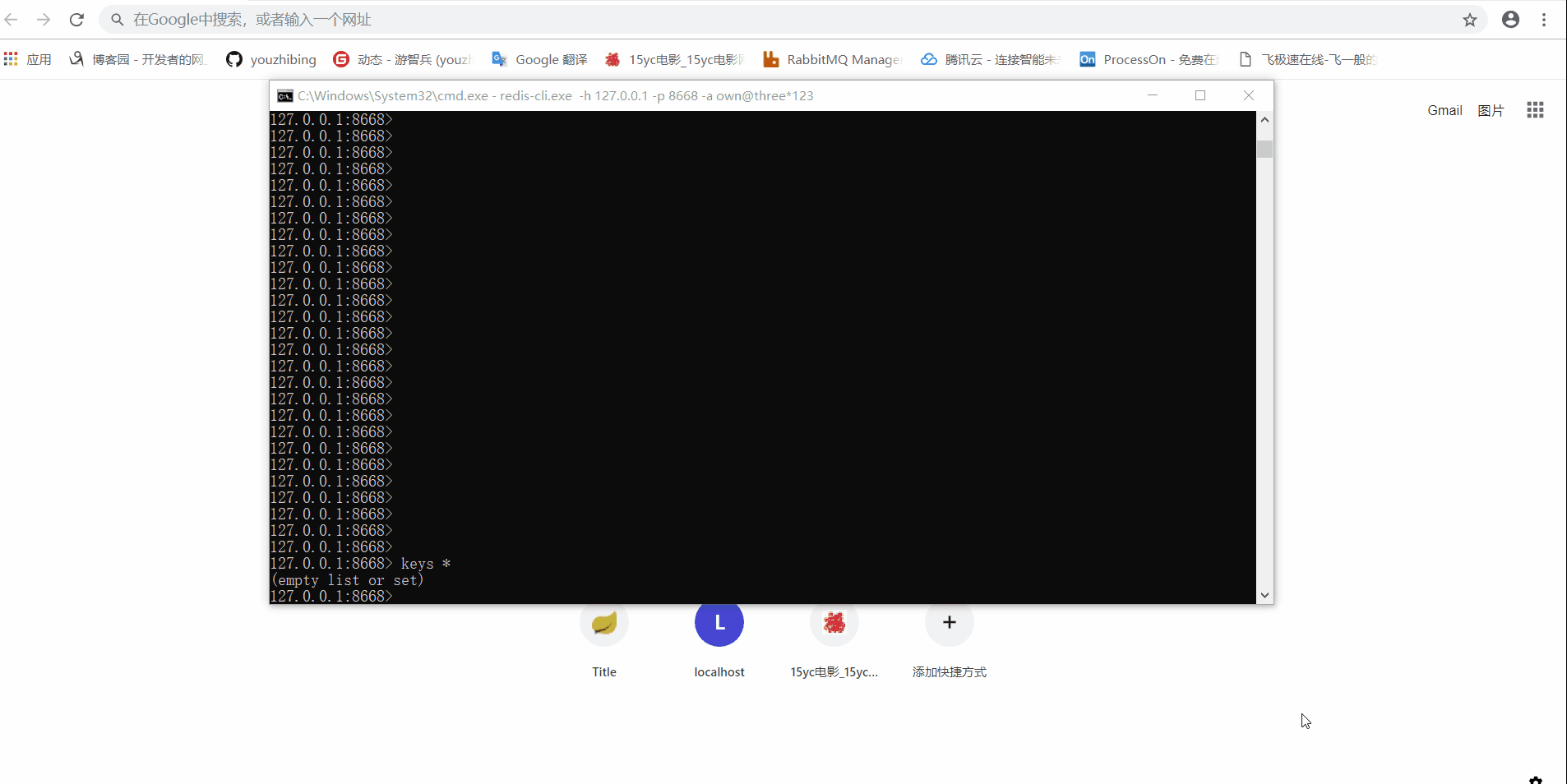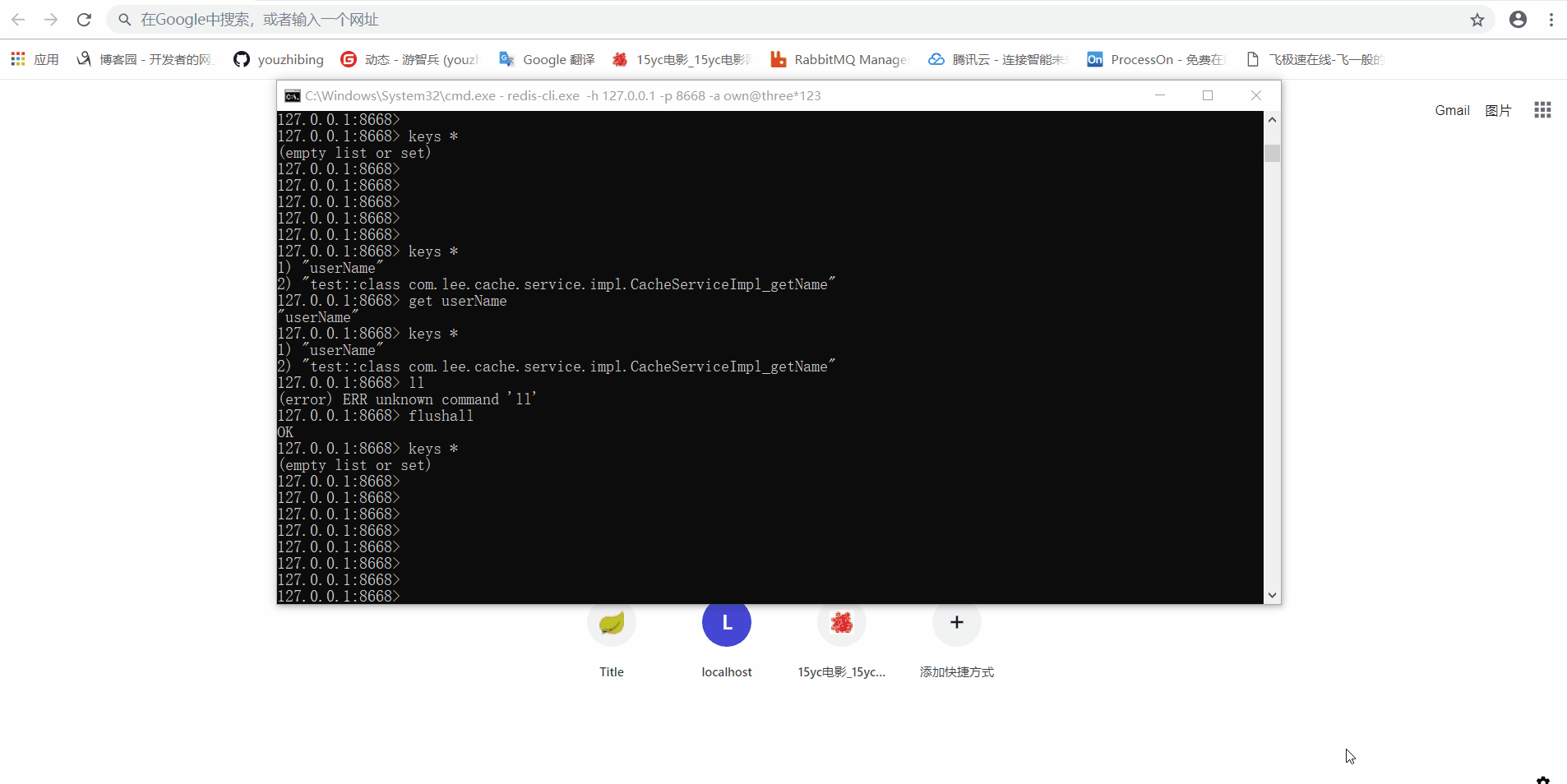前言
开心一刻
小白问小明:“你前面有一个5米深的坑,里面没有水,如果你跳进去后该怎样出来了?”小明:“躺着出来呗,还能怎么出来?”小白:“为什么躺着出来?”小明:“5米深的坑,还没有水,跳下去不死就很幸运了,残是肯定会残的,不躺着出来,那能怎么出来?”小白:“假设没死也没残呢?”小明:“你当我超人了? 那也简单,把脑子里的水放出来就可以漂出来了。”小白:“你脑子里有这么多水吗?”小明:“我脑子里没那么多水我跳下去干嘛?”
路漫漫其修远兮,吾将上下而求索!
github:https://github.com/youzhibing
码云(gitee):https://gitee.com/youzhibing
springboot 1.x到2.x变动的内容还是挺多的,而2.x之间也存在细微的差别,本文不讲这些差别(具体差别我也不知道,汗......),只讲1.5.9与2.0.3的redis缓存配置的区别
springboot1.5.9缓存配置
工程实现
1.x系列配置应该都差不多,下面我们看看1.5.9中,springboot集成redis的缓存实现
pom.xml

<?xml version="1.0" encoding="UTF-8"?> <project xmlns="http://maven.apache.org/POM/4.0.0" xmlns:xsi="http://www.w3.org/2001/XMLSchema-instance" xsi:schemaLocation="http://maven.apache.org/POM/4.0.0 http://maven.apache.org/xsd/maven-4.0.0.xsd"> <modelVersion>4.0.0</modelVersion> <groupId>com.lee</groupId> <artifactId>spring-boot159.cache</artifactId> <version>1.0-SNAPSHOT</version> <properties> <java.version>1.8</java.version> </properties> <parent> <groupId>org.springframework.boot</groupId> <artifactId>spring-boot-starter-parent</artifactId> <version>1.5.9.RELEASE</version> </parent> <dependencies> <dependency> <groupId>org.springframework.boot</groupId> <artifactId>spring-boot-starter-web</artifactId> </dependency> <dependency> <groupId>org.springframework.boot</groupId> <artifactId>spring-boot-starter-data-redis</artifactId> </dependency> </dependencies> </project>
application.yml

server: port: 8888 spring: #redis配置 redis: database: 0 host: 127.0.0.1 port: 6379 password: # 连接超时时间(毫秒) timeout: 2000 pool: # 连接池最大连接数(使用负值表示没有限制) max-active: 8 # 连接池最大阻塞等待时间(使用负值表示没有限制) max-wait: -1 # 连接池中的最大空闲连接 max-idle: 8 # 连接池中的最小空闲连接 min-idle: 0 cache: type: redis cache: expire-time: 180
RedisCacheConfig.java

package com.lee.cache.config; import com.fasterxml.jackson.annotation.JsonAutoDetect; import com.fasterxml.jackson.annotation.PropertyAccessor; import com.fasterxml.jackson.databind.ObjectMapper; import org.springframework.beans.factory.annotation.Value; import org.springframework.cache.CacheManager; import org.springframework.cache.annotation.CachingConfigurerSupport; import org.springframework.cache.annotation.EnableCaching; import org.springframework.cache.interceptor.KeyGenerator; import org.springframework.context.annotation.Bean; import org.springframework.context.annotation.Configuration; import org.springframework.data.redis.cache.RedisCacheManager; import org.springframework.data.redis.connection.RedisConnectionFactory; import org.springframework.data.redis.core.RedisTemplate; import org.springframework.data.redis.core.StringRedisTemplate; import org.springframework.data.redis.serializer.Jackson2JsonRedisSerializer; /** * 必须继承CachingConfigurerSupport,不然此类中生成的Bean不会生效(没有替换掉默认生成的,只是一个普通的bean) * springboot默认生成的缓存管理器和redisTemplate支持的类型很有限,根本不满足我们的需求,会抛出如下异常: * org.springframework.cache.interceptor.SimpleKey cannot be cast to java.lang.String */ @Configuration @EnableCaching public class RedisCacheConfig extends CachingConfigurerSupport { @Value("${cache.expire-time:180}") private int expireTime; // 配置key生成器,作用于缓存管理器管理的所有缓存 // 如果缓存注解(@Cacheable、@CacheEvict等)中指定key属性,那么会覆盖此key生成器 @Bean public KeyGenerator keyGenerator() { return (target, method, params) -> { StringBuilder sb = new StringBuilder(); sb.append(target.getClass().getName()); sb.append(method.getName()); for (Object obj : params) { sb.append(obj.toString()); } return sb.toString(); }; } // 缓存管理器管理的缓存都需要有对应的缓存空间,否则抛异常:No cache could be resolved for 'Builder... @Bean public CacheManager cacheManager(RedisTemplate redisTemplate) { RedisCacheManager rcm = new RedisCacheManager(redisTemplate); rcm.setDefaultExpiration(expireTime); //设置缓存管理器管理的缓存的过期时间, 单位:秒 return rcm; } @Bean public RedisTemplate<String, String> redisTemplate(RedisConnectionFactory factory) { StringRedisTemplate template = new StringRedisTemplate(factory); Jackson2JsonRedisSerializer jackson2JsonRedisSerializer = new Jackson2JsonRedisSerializer(Object.class); ObjectMapper om = new ObjectMapper(); om.setVisibility(PropertyAccessor.ALL, JsonAutoDetect.Visibility.ANY); om.enableDefaultTyping(ObjectMapper.DefaultTyping.NON_FINAL); jackson2JsonRedisSerializer.setObjectMapper(om); template.setValueSerializer(jackson2JsonRedisSerializer); template.afterPropertiesSet(); return template; } }
CacheServiceImpl.java

package com.lee.cache.service.impl; import com.lee.cache.model.User; import com.lee.cache.service.ICacheService; import org.springframework.beans.factory.annotation.Autowired; import org.springframework.cache.annotation.Cacheable; import org.springframework.data.redis.core.RedisTemplate; import org.springframework.stereotype.Service; import org.springframework.util.StringUtils; import java.util.ArrayList; import java.util.List; /** * 若未配置@CacheConfig(cacheNames = "hello"), 则@Cacheable一定要配置value,相当于指定缓存空间 * 否则会抛异常:No cache could be resolved for 'Builder... * * 若@CacheConfig(cacheNames = "hello") 与 @Cacheable(value = "123")都配置了, 则@Cacheable(value = "123")生效 * * 当然@CacheConfig还有一些其他的配置项,Cacheable也有一些其他的配置项 */ @Service public class CacheServiceImpl implements ICacheService { @Autowired private RedisTemplate<String, String> redisTemplate; @Override @Cacheable(value = "test") // key用的自定义的KeyGenerator public String getName() { System.out.println("getName, no cache now..."); return "brucelee"; } @Override @Cacheable(value = "user", key = "methodName + '_' + #p0", unless = "#result.size() <= 0") // key会覆盖掉KeyGenerator public List<User> listUser(int pageNum, int pageSize) { System.out.println("listUser no cache now..."); List<User> users = new ArrayList<>(); users.add(new User("zhengsan", 22)); users.add(new User("lisi", 20)); System.out.println("==========="); return users; } /** * 缓存不是缓存管理器管理,那么不受缓存管理器的约束 * 缓存管理器中的配置不适用与此 * 这里相当于我们平时直接通过redis-cli操作redis * @return */ @Override public String getUserName() { String userName = redisTemplate.opsForValue().get("userName"); if (!StringUtils.isEmpty(userName)) { return userName; } System.out.println("getUserName, no cache now..."); redisTemplate.opsForValue().set("userName", "userName"); return "userName"; } }
上述只讲了几个主要的文件,更多详情请点springboot159-cache
redis 怎样保存cache
大家一定要把工程仔细看一遍,不然下面出现的一些名称会让我们感觉不知从哪来的;

工程中的缓存分两种:缓存管理器管理的缓存(也就是一些列注解实现的缓存)、redisTemplate操作的缓存
缓存管理器管理的缓存
会在redis中增加2条数据,一个是类型为 zset 的 缓存名~keys , 里面存放了该缓存所有的key, 另一个是对应的key,值为序列化后的json;缓存名~keys可以理解成缓存空间,与我们平时所说的具体的缓存是不一样的。另外对缓存管理器的一些设置(全局过期时间等)都会反映到缓存管理器管理的所有缓存上;上图中的http://localhost:8888/getName和http://localhost:8888/listUser?pageNum=1&pageSize=3对应的是缓存管理器管理的缓存。
redisTemplate操作的缓存
会在redis中增加1条记录,key - value键值对,与我们通过redis-cli操作缓存一样;上图中的http://localhost:8888/getUserName对应的是redisTemplate操作的缓存。
spring2.0.3缓存配置
工程实现
pom.xml

<?xml version="1.0" encoding="UTF-8"?> <project xmlns="http://maven.apache.org/POM/4.0.0" xmlns:xsi="http://www.w3.org/2001/XMLSchema-instance" xsi:schemaLocation="http://maven.apache.org/POM/4.0.0 http://maven.apache.org/xsd/maven-4.0.0.xsd"> <modelVersion>4.0.0</modelVersion> <groupId>com.lee</groupId> <artifactId>spring-boot-cache</artifactId> <version>1.0-SNAPSHOT</version> <parent> <groupId>org.springframework.boot</groupId> <artifactId>spring-boot-starter-parent</artifactId> <version>2.0.3.RELEASE</version> </parent> <dependencies> <dependency> <groupId>org.springframework.boot</groupId> <artifactId>spring-boot-starter-web</artifactId> </dependency> <dependency> <groupId>org.springframework.boot</groupId> <artifactId>spring-boot-starter-data-redis</artifactId> </dependency> <dependency> <groupId>org.apache.commons</groupId> <artifactId>commons-pool2</artifactId> </dependency> <dependency> <groupId>org.apache.commons</groupId> <artifactId>commons-lang3</artifactId> </dependency> </dependencies> </project>
application.yml

server: port: 8889 spring: #redis配置 redis: database: 0 host: 127.0.0.1 port: 6379 password: lettuce: pool: # 接池最大连接数(使用负值表示没有限制) max-active: 8 # 连接池最大阻塞等待时间(使用负值表示没有限制) max-wait: -1ms # 连接池中的最小空闲连接 max-idle: 8 # 连接池中的最大空闲连接 min-idle: 0 # 连接超时时间 timeout: 2000ms cache: type: redis cache: test: expire-time: 180 name: test default: expire-time: 200
缓存定制:RedisCacheManagerConfig.java

package com.lee.cache.config; import org.springframework.beans.factory.annotation.Value; import org.springframework.cache.CacheManager; import org.springframework.context.annotation.Bean; import org.springframework.context.annotation.Configuration; import org.springframework.data.redis.cache.RedisCacheConfiguration; import org.springframework.data.redis.cache.RedisCacheManager; import org.springframework.data.redis.connection.RedisConnectionFactory; import org.springframework.data.redis.serializer.GenericJackson2JsonRedisSerializer; import org.springframework.data.redis.serializer.RedisSerializationContext; import org.springframework.data.redis.serializer.StringRedisSerializer; import java.time.Duration; import java.util.HashMap; import java.util.HashSet; import java.util.Map; import java.util.Set; /** * 进行缓存管理的定制 * 可以不配置,采用springboot默认的也行 */ @Configuration public class RedisCacheManagerConfig { @Value("${cache.default.expire-time:1800}") private int defaultExpireTime; @Value("${cache.test.expire-time:180}") private int testExpireTime; @Value("${cache.test.name:test}") private String testCacheName; //缓存管理器 @Bean public CacheManager cacheManager(RedisConnectionFactory lettuceConnectionFactory) { RedisCacheConfiguration defaultCacheConfig = RedisCacheConfiguration.defaultCacheConfig(); // 设置缓存管理器管理的缓存的默认过期时间 defaultCacheConfig = defaultCacheConfig.entryTtl(Duration.ofSeconds(defaultExpireTime)) // 设置 key为string序列化 .serializeKeysWith(RedisSerializationContext.SerializationPair.fromSerializer(new StringRedisSerializer())) // 设置value为json序列化 .serializeValuesWith(RedisSerializationContext.SerializationPair.fromSerializer(new GenericJackson2JsonRedisSerializer())) // 不缓存空值 .disableCachingNullValues(); Set<String> cacheNames = new HashSet<>(); cacheNames.add(testCacheName); // 对每个缓存空间应用不同的配置 Map<String, RedisCacheConfiguration> configMap = new HashMap<>(); configMap.put(testCacheName, defaultCacheConfig.entryTtl(Duration.ofSeconds(testExpireTime))); RedisCacheManager cacheManager = RedisCacheManager.builder(lettuceConnectionFactory) .cacheDefaults(defaultCacheConfig) .initialCacheNames(cacheNames) .withInitialCacheConfigurations(configMap) .build(); return cacheManager; } }
此类可不用配置,就用spring-boot自动配置的缓存管理器也行,只是在缓存的可阅读性上会差一些。有兴趣的朋友可以删除此类试试。
CacheServiceImpl.java

package com.lee.cache.service.impl; import com.lee.cache.model.User; import com.lee.cache.service.ICacheService; import org.apache.commons.lang3.StringUtils; import org.springframework.beans.factory.annotation.Autowired; import org.springframework.cache.annotation.CacheConfig; import org.springframework.cache.annotation.Cacheable; import org.springframework.data.redis.core.RedisTemplate; import org.springframework.stereotype.Service; import java.util.ArrayList; import java.util.List; /** * 若未配置@CacheConfig(cacheNames = "hello"), 则@Cacheable一定要配置value * 若@CacheConfig(cacheNames = "hello") 与 @Cacheable(value = "123")都配置了, 则@Cacheable(value = "123") 生效 * * 当然@CacheConfig还有一些其他的配置项,Cacheable也有一些其他的配置项 */ @Service public class CacheServiceImpl implements ICacheService { @Autowired private RedisTemplate<String, String> redisTemplate; @Override @Cacheable(value = "test", key = "targetClass + '_' + methodName") public String getName() { System.out.println("getName, no cache now..."); return "brucelee"; } @Override @Cacheable(value = "user", key = "targetClass + ':' + methodName + '_' + #p0", unless = "#result.size() <= 0") public List<User> listUser(int pageNum, int pageSize) { System.out.println("listUser no cache now..."); List<User> users = new ArrayList<>(); users.add(new User("zhengsan", 22)); users.add(new User("lisi", 20)); return users; } /** * 缓存不是缓存管理器管理,那么不受缓存管理器的约束 * 缓存管理器中的配置不适用与此 * 这里相当于我们平时直接通过redis-cli操作redis * @return */ @Override public String getUserName() { String userName = redisTemplate.opsForValue().get("userName"); if (StringUtils.isNotEmpty(userName)) { return userName; } System.out.println("getUserName, no cache now..."); redisTemplate.opsForValue().set("userName", "userName"); return "userName"; } }
更多详情请点spring-boot-cache
redis 怎样保存cache
我们来看图说话,看看缓存在redis中是如何保存的

工程中的缓存分两种:缓存管理器管理的缓存(也就是一些列注解实现的缓存)、redisTemplate操作的缓存
缓存管理器管理的缓存
会在redis中增加1条数据,key是以缓存空间开头的字符串(缓存空间名::缓存key),值为序列化后的json;上图中的http://localhost:8889/getName和http://localhost:8889/listUser?pageNum=1&pageSize=3对应的是缓存管理器管理的缓存。
redisTemplate操作的缓存
会在redis中增加1条记录,key - value键值对,与我们通过redis-cli操作缓存一样;上图中的http://localhost:8889/getUserName对应的是redisTemplate操作的缓存。
总结
1、有时候我们引入spring-boot-starter-cache这个starter只是为了快速添加缓存依赖,目的是引入spring-context-support;如果我们的应用中中已经有了spring-context-support,那么我们无需再引入spring-boot-starter-cache,例如我们的应用中依赖了spring-boot-starter-web,而spring-boot-starter-web中又有spring-context-support依赖,所以我们无需再引入spring-boot-starter-cache。
2、Supported Cache Providers,讲了支持的缓存类型以及默认情况下的缓存加载方式,可以通读下。
3、只要我们引入了redis依赖,并将redis的连接信息配置正确,springboot(2.0.3)根据我们的配置会给我们生成默认的缓存管理器和redisTemplate;我们也可以自定义我们自己的缓存管理器来替换掉默认的,只要我们自定义了缓存管理器和redisTemplate,那么springboot的默认生成的会替换成我们自定义的。
4、缓存管理器对缓存的操作也是通过redisTemplate实现的,只是进行了统一的管理,并且能够减少我们的代码量,我们可以将更多的精力放到业务处理上。
5、redis-cli -h 127.0.0.1 -p 6379 -a 123456与redis-cli -a 123456两种方式访问到的数据完全不一致,好像操作不同的库一样! 这个需要注意,有空我回头看看这两者到底有啥区别,有知道的朋友可以留个言。
最后缅怀一下:金庸走了,再无江湖;IG捧杯了,再无LOL!感谢IG成就了我的完美谢幕,让我的青春少了一份遗憾,谢谢!
